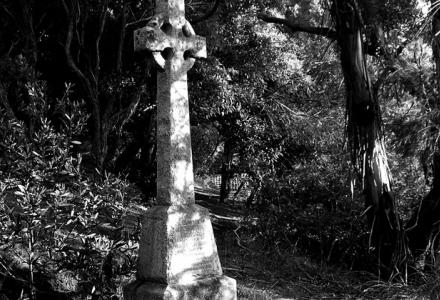Elizabeth Mellor first wrote to Melbourne Base Records in 1917. She had heard nothing from her son Samuel in years and feared ‘something must have happened to him’. She wondered if the Army could tell her anything. ‘He was always such a good lad and very proud of being a soldier’.
As the Army saw it, Samuel Mellor had not been a good lad at all. Barely seventeen when he enlisted, the boy fell into bad company. He went AWOL in Egypt and deserted from the army not long after arriving in England. In 1917, his mother had been told that her son was ‘illegally absent’. And that was something she couldn’t believe.
At the end of the war, Mellor’s Official status was still ‘Absent’. His mother resumed her search. In June 1919, Mrs Mellor sent him a photograph to Base Records and asked it be forwarded on to London. ‘My son has a very faint scar at the corner of one eye’, ‘brown moles on his neck and body’, ‘it is now over three years since I've had a letter from him’. The next year she thought she recognised Samuel in a picture published in the evening papers. The column was headed ‘Who is He?’ and featured one of a legion of nameless men who surfaced in the wake of war. By 1921, Mrs Mellor had devised her own explanation for her son’s disappearance: ‘It has come to my knowledge that he is in an asylum badly shell-shocked and [suffering from] loss of speech. He is in a place 100 miles from London called Leicester, it is the one on a hill near the cemetery. Would you kindly investigate this matter for me’.
There was no such investigation. Mrs Mellor’s last letter to Base Records was written in 1939, as the world prepared for another war: ‘I had a son named Samuel Rowley Mellor. He joined up with the first light horse, 11th reinforcements, he left Sydney 1915 on 23 October … Now it is a long time ago, though my tears don’t dry when I think of him. He joined up under the name of Richard Rowley Mellor, that was his older brother’s name, he gave his age as 22 but my darling was only 17 years …. I am now nearing the closing of life I am 80, I would feel very grateful to you for a reply.’
Through all this correspondence the official response was much the same: Mrs Mellor’s son had gone AWOL. But the full truth was far more confronting. Having deserted the first AIF, Mellor had adopted yet another name and joined the British Army. He had served out the war as Gunner Frank Wills of the Royal Field Artillery. In 1919, the young man was arrested in Paris. In a drunken brawl, he had killed a military policeman. Gunner Frank Wills was sentenced to death by firing squad; his last request was to speak to an Australian officer.
Samuel Mellor made no attempt to save his life. But he did ask that his mother be told what happened to him. Without delay, the Officer cabled London for instructions. What action—if any-should be taken re the fate of Gunner Wills? London wired back several days later: ‘message not understood’.
Samuel Mellor was shot at dawn on 27 May 1919. He was buried under the name he’d adopted. And the truth was buried with him.
The Mellor family’s story reminds us of the secrets that fester in wartime. They show how the authorities were complicit in concealing the truth, how they kept a false hope alive, and prolonged a mother’s mourning. It would not be until 2006 that men executed by the British Army for so called ‘cowardice’ would be pardoned. Such a pardon does not extend to men sentenced to death for a civil offence.
For full attribution of sources, suggestions for further reading and an extended version of the story itself see ‘Marked “secret”: Samuel Mellor’ in Bruce Scates, Rebecca Wheatley and Laura James, World War One: A History in 100 stories (Melbourne, Penguin/Viking, 2015) pp. 61-64; 355.



